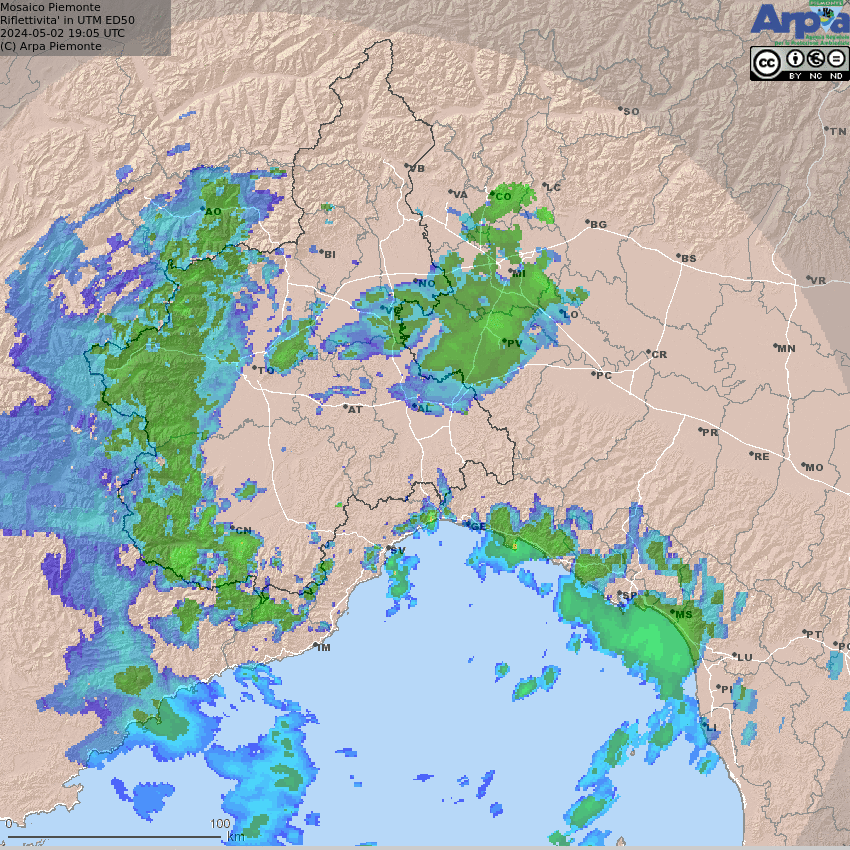
Didattica a caso. Probabilmente una ripetizione esatta di un identico post di chissà quando. Questa è una circolazione ciclonica, facilmente tracciabile grazie alla pioggia, il cui centro è quasi nel mezzo del Mar Ligure. Veniva citata nei vecchi manuali di meteorologia e nei libri di navigazione delle navi della NATO quando visitavano il mar Ligure. Gli anglofoni la chiamavano “Genoa Low” ed era una potenziale minaccia di cui tenere conto quanto ci si metteva in rada all’ancora di fronte al porto di Genova. La fase più critica era data dall’improvviso scirocco che investiva le coste, agitando il mare in poco tempo. Quando vedo una Genoa Low, il pensiero mi corre sempre a quando La London Valour pagò il prezzo peggiore nel 1970, Ecco il racconto di come si arrivò al disastro.
Da: Wikipedia. On 7 April 1970 she arrived off the Port of Genoa and she anchored in the roads about 1,300 metres (4,300 ft) south of the Duca di Galliera harbour mole to await a berth.
As the bulk carrier waited at anchor the chief engineer, Sam Mitchell, used the time to carry out maintenance work on the ship’s auxiliary engines. His men completed this work on the morning of 9 April.
A few hours later, at about 1200 hrs, the atmospheric pressure had fallen to 748 mmHg (997 hPa). At first the wind remained low, about Force 2 or 3, blowing from the southeast. Then at about 1300 hrs the wind backed to southwest and grew stronger. London Valour‘s Master, Captain Donald Muir, held a meeting on the bridge but considered the ship was not in particular danger.
In particular, Muir did not tell his deck officers that as the auxiliary engines had been down for maintenance, the engine room would need to be ordered to have the main engines on standby if a need arose to move the ship. Muir then rejoined his wife in his cabin, leaving Second Officer Donald Allan MacIsaac on watch.
The wind intensified, causing London Valour to drag her anchor and driving her towards the shore. At about 1330 hrs the first officer, Robert Kitchener, saw from his cabin that the ship was getting closer to the mole. He raised a general alarm, and Second Officer MacIsaac alerted Captain Muir and the engineer on watch.
Chief Engineer Mitchell tried to start the steam turbines to enable the ship to move away from the mole. At 1350 hrs atmospheric pressure had fallen to 742 mm of mercury and the wind had risen to a Force 8 gale. At 1422 hrs the waves and wind drove London Valour aground. At 1430 hrs London Valour transmitted a Mayday radio message.
I morti furono venti. Quando poi la bassa pressione inizia in genere a spostarsi verso sud-east, il vento gira in tramontana che può essere scura se è accompagnata da pioggia o chiara se il cielo si rasserena. Il mare si calma e torna tutto tranquillo, almeno sotto costa in Liguria.
Questa rappresentata nel gif è stata modesta per intensità, non penso abbia fatto danni se non qualche rametto caduto e qualche tombino intasato. Buonanotte.

